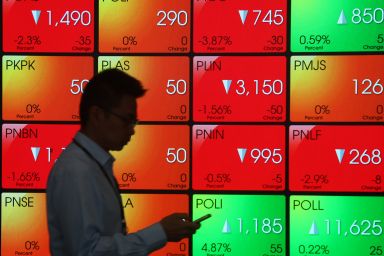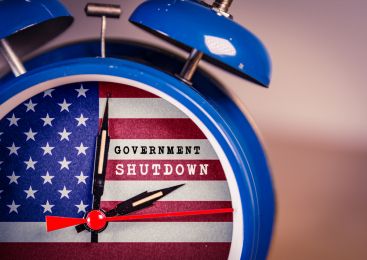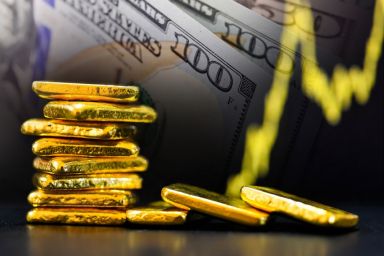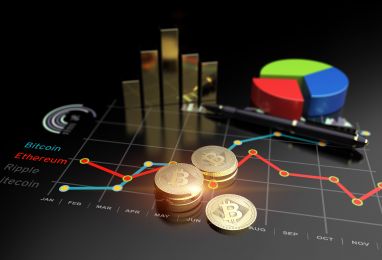Featured articles

Why Michael Burry just sold all his tech stocks
Michael Burry has just exited a nearly $100 million position on Nvidia that he opened earlier this year.
14:42, 9 October 2025

Gold forecast: Third-party price targets
Gold (XAU/USD) is currently trading at $3,982.94 (as of 6:12pm UTC, 7 October 2025), after briefly crossing $4,000 per ounce for the first time during the session.
14:43, 9 October 2025

How does Elon Musk impact cryptocurrency prices?
In cryptocurrency markets, few individuals command as much attention as Elon Musk. The CEO of Tesla and SpaceX’s tweets, Tesla and Dogecoin announcements, and public statements can trigger periods of heightened volatility, with shifts in buying and selling pressure across digital assets.
13:29, 30 September 2025

Stocks vs. index trading: what’s the difference?
Stocks and indices each play a central role in financial markets, but they offer different ways to access and interpret market performance. This article explains how both operate, the factors that influence their movements, and what traders may take into account when comparing individual shares with broader market indices.
an hour ago

How to invest in Indonesian stock CFDs: Jakarta Composite Index guide
The Indonesian stock market remains a standout performer in Asia, with the Jakarta Composite Index (JCI) reaching new highs above 8,300 in November 2025. Past performance is not a reliable indicator of future results.
an hour ago

Volkswagen short squeeze: history and market context
This article examines the likelihood of a Volkswagen short squeeze today, analysing recent data and revisiting the factors that enabled earlier squeezes.
2 hours ago

How to invest in Vietnam stocks: Benchmark valuations hit decade lows prompting investors to bet on rebound
Vietnam’s stock market has evolved into one of Asia’s most closely watched emerging markets.
3 hours ago

Stocks vs. index trading: what’s the difference?
Stocks and indices each play a central role in financial markets, but they offer different ways to access and interpret market performance. This article explains how both operate, the factors that influence their movements, and what traders may take into account when comparing individual shares with broader market indices.
an hour ago

FTSE vs. property: which performs best over the longer term?
Explore how the FTSE 100 and UK property markets compare over time, including performance trends, risks and diversification insights.
8 hours ago

Markets rally on rising Fed cut bets, Europe leads the gains
Global stocks trade higher as optimism around the possible end of the US government shutdown improves sentiment, alongside greater odds of rate cuts from the Federal Reserve
11:06, 12 November 2025

Market Mondays: Shutdown relief drives sentiment higher
Market sentiment improves, lifting equities and weighing on the dollar, as a deal aimed at ending the US government shutdown has passed the Senate
10:50, 10 November 2025

Market Mondays: Shutdown relief drives sentiment higher
Market sentiment improves, lifting equities and weighing on the dollar, as a deal aimed at ending the US government shutdown has passed the Senate
10:50, 10 November 2025

Gold steadies as safe-haven demand increases
Gold sees renewed safe haven interest as investors become more risk-averse, but several hurdles remain ahead
11:23, 5 November 2025

Gold Mining Stocks: Top Producers, Performance and Industry Outlook
Gold mining stocks provide a way to gain exposure to the precious metals market. For CFD traders, identifying which companies offer strong potential can have a notable impact on performance.
07:57, 5 November 2025

Market Mondays: Balancing cuts, earnings, and a stronger dollar
Markets digest the impact of last week's volatility after a hawkish cut from the FOMC and tech earnings that didn't quite meet the mark
11:14, 3 November 2025

Market Mondays: Shutdown relief drives sentiment higher
Market sentiment improves, lifting equities and weighing on the dollar, as a deal aimed at ending the US government shutdown has passed the Senate
10:50, 10 November 2025

Market Mondays: Balancing cuts, earnings, and a stronger dollar
Markets digest the impact of last week's volatility after a hawkish cut from the FOMC and tech earnings that didn't quite meet the mark
11:14, 3 November 2025

ECB Preview: no action expected as economy settles
The European Central Bank is expected to leave rates unchanged at their meeting this week as the balance of risks remains in favour of moderate growth and inflation
10:59, 29 October 2025

Market Analysis: Gold, Nasdaq 100, GBPUSD
A look into how gold, the Nasdaq 100 and GBPUSD are trading during a busy week of ok key earnings reports and central bank meetings.
09:44, 29 October 2025

Bitcoin price history: how BTC has evolved since 2009
Explore the timeline of Bitcoin’s price movements – from its inception to today.
an hour ago

What is EstateX? Your ultimate guide
EstateX (ESX) is a blockchain platform that tokenises property to make real estate investment more accessible. This guide explains how it works, its key features and roadmap, and highlights the potential opportunities and risks of tokenised property.
3 hours ago

Gold vs Bitcoin 2025: Complete comparison
Can the leading cryptocurrency rival a traditional safe haven asset? Compare gold vs. bitcoin and explore whether it could be time to diversify your portfolio with bitcoin and gold.
8 hours ago

What is Terra Luna 2.0? Everything you need to know about Terra’s fork
An arrest warrant remains in effect for Terra co-founder Do Kwon, whose ongoing legal situation continues to cast uncertainty over Terra projects.
17:51, 12 November 2025
